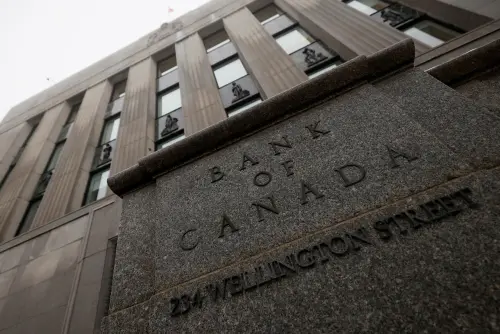Uncertainty regarding the impact of the U.S. economy may prompt the Bank of Canada to provide a range of economic estimates instead of a single forecast in its upcoming projections, according to Governor Tiff Macklem.
The central bank plans to release its quarterly monetary policy report on April 16, where it will outline growth predictions for the upcoming quarters and years. However, Macklem noted that fluctuations in U.S. trade policy have complicated the assumptions guiding the Canadian economy.
"If we were to prepare that monetary policy report today, I don't think it would have a single central projection," he stated during a press conference, suggesting that the Bank could instead present a range of potential outcomes.
The Bank of Canada last revised its approach to forecasting five years ago due to the COVID-19 pandemic and would revert to its typical practice once uncertainties surrounding tariffs are resolved, he added.
In its last monetary policy report, the Bank projected an economic growth rate of 1.8% for 2025 and expected a 2% growth in the first quarter of this year, on an annualized basis. However, Macklem cautioned that members of the governing council lack high conviction about what the most likely outcomes will be.
He explained that the uncertainty surrounding U.S. tariffs necessitates a shift in monetary policy conduct, making it less forward-looking than usual. If the Bank incorrectly predicts the economy's trajectory, its policy actions could be ineffective or exacerbate the situation.
"We need to set policy that minimizes the risk. That means being less forward-looking than normal until the situation is clearer," he told a business audience in Calgary, emphasizing the importance of flexibility and adaptability, though he refrained from providing specific details.
Macklem reaffirmed the Bank's commitment to maintaining low inflation, stressing the need to prevent higher prices from tariffs from spreading throughout the economy. The unpredictability of tariffs complicates assessments of their effects on demand and consumer prices.
He explained that a more inflationary impact would necessitate a greater focus on anchoring inflation expectations, which risk drift upward as inflation rises rapidly. The Bank aims to maintain inflation at 2%, the mid-point of its 1-3% target range.
Macklem acknowledged that while the Bank had successfully lowered inflation to its target, it is likely to rise again. "The Canadian economy managed a soft landing. Unfortunately, we're not going to stay on the tarmac for long. We now face a new economic crisis," he said.
